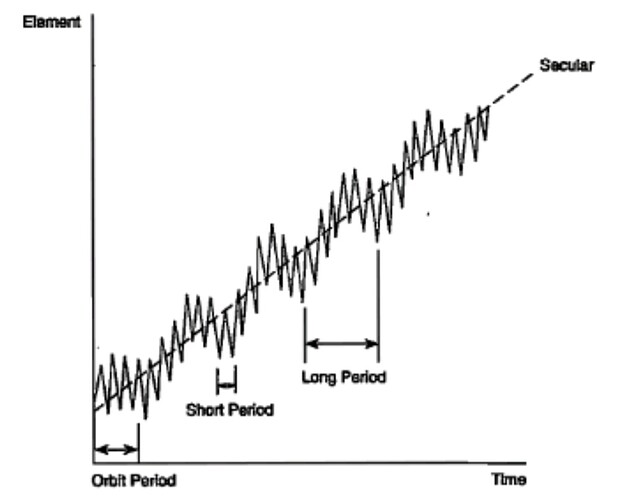Thank you, everyone!
I’m experiencing issues when obtaining mean elements through the Brouwer-Lyddane propagator (invalid parameter eccentricity: -0 not in range [0, ∞]). Is this issue resolved in version 12.0.1?
Hi there,
No it’s not. This MR (thanks @alberto-ferrero) provides a tentative fix, but it’s not integrable just yet. So you’ll probably need to wait for version 12.1 rather than 12.0.2.
Cheers,
Romain
Thanks! You are so kind.
Hello, my understanding is that the mean elements eliminate short-period perturbations while retaining long-term and long-period perturbations. I would like to know if the computeMeanOrbit method in the Brouwer-Lyddane propagator, the computeMeanOrbit method in the Eckstein-Hechler propagator, and the computeMeanState method in the DSST propagator are indeed designed to eliminate short-period perturbations and preserve long-term and long-period perturbations?
Thanks!
Hi @newWL
The short (period) answer is yes.
Now the long (period) answer ![]()
All those models are based on the same philosophy: The osculating variation of the orbital elements is equal to the sum of the secular variations + the long term variations + the short period terms.
The limit between long term variations and short period terms is the orbital period. The sum of the secular variations + the long term variations are also called the mean elements.
Therefore, the purpose of the computeMeanOrbit and computeMeanState is indeed to remove short period terms of an osculating orbit to extract the mean elements.
However, the mean elements computed by the Brouwer-Lyddane model are different to the mean elements computed by the Eckstein-Hechler, and also different to the one computed by the DSST. They are different because those models are different. Brouwer-Lyddane will extract short period terms of J2 to J5 zonal elements. Eckstein-Hechler will extract short period terms of J2 to J6 zonal elements. And DSST will exract short period terms depending the DSSTForceModel you use. Therefore, if you use accurate force model, the DSST mean orbit will be closer to the “real” mean orbit.
So, they are an infinity of mean orbits ![]()
Best regards,
Bryan
Thank you very much for your detailed and professional response.
